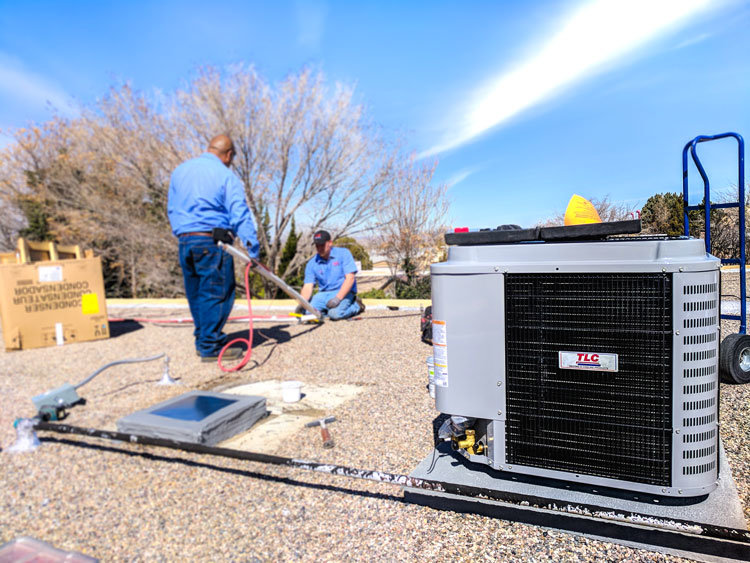Most of us are familiar with Murphy’s Law. Ole Murphy likes to burst onto the scene at the worst possible moment. When it comes to replacing and purchasing your home’s comfort systems – like your heater, air conditioner and water heater – you don’t want to be taken by surprise! The good news is that you don’t have to be.
Here are five ways you can prepare for home equipment purchases:
1. Determine the age and condition of your home comfort equipment
This is a very important step in preparing for equipment purchases. It is ideal to have a professional determine the age and condition of your heating, cooling, plumbing and electrical systems prior to purchasing a home. Luckily, it is never too late to evaluate your equipment.
Start with finding out the age of your equipment. This will give a ballpark idea of when you will need to replace it. Here are average life-spans for common equipment:
- Furnace: 15 – 20 years
- Swamp Cooler: 10 years
- Refrigerated Air: 15 – 20 years
- Water Heater: 10 – 12 years
Look for a tag or sticker on your equipment that states the serial number. Oftentimes, the date is included. If it is not, you can usually find the age of your equipment by searching the serial number on the manufacturer’s website.
Maintenance or a lack of it can affect the life span of your equipment. If you have no idea of the condition of your equipment, you should have a professional plumber and/or HVAC professional come and inspect your HVAC and/or plumbing system. They should be able to give you an estimated remaining life span for your equipment.

2. Start saving now for equipment purchases later
Though financing options are usually available for major home equipment purchases, it is easier to buy it outright. You will avoid the headache and frustration of the expensive but necessary equipment costs. A large down payment is also helpful if you do choose the financing route. If you know you’re going to have to replace your heating or cooling system or your water heater, you can at least feel prepared financially. Start setting aside a little part of each paycheck, and you will be better prepared when the time comes to purchase.
3. Research the various equipment options
Don’t wait until you’re without heat or air conditioning to start researching options. If you wait, you’ll be rushed to make these decisions since you’ll need the service right away. Many things factor into the model you choose, including budget, energy efficiency, home and equipment size, comfort, brand and more. It will be less stressful to look at all these factors before it becomes urgent.
Don’t be overwhelmed by all the questions and possibilities. If you plan ahead enough, you can avoid the pressure of being rushed to make snap decisions. Take your time to research online, consult with professionals and consider what you expect from your new equipment.
Are you unsure of what questions you should be asking? Consider the following:
- What equipment options are available within my budget?
- How will the new equipment affect my energy usage?
- Should I upgrade to newer technology? (tank water heater to tankless, swamp cooler to refrigerated air, etc.)
TLC’s HVAC and plumbing professionals are fully equipped to help you ask and answer the right questions about your family’s needs. You can “Ask a Pro” to learn more about equipment options and pricing.
4. Secure an estimate for the equipment option you have selected
Most companies offer free estimates on home equipment purchases and installation. It is a good idea to get estimates from a few reputable companies. You can take it a step further by requesting a good, better and best option from each company. Otherwise, you may end up comparing one company’s “good” option with another company’s “best” option. By comparing each company’s good, better and best, you get a more complete idea of what’s available and at what price.
Click here to learn more about choosing an HVAC contractor.
Keep in mind that most estimates have an expiration date. If you wait to purchase until after the estimate expires, you should verify that pricing has not changed.
5. Once the equipment’s installed, create a plan for maintaining your new equipment
Maintenance plays a huge role in the life span of your equipment. The average furnace lasts 15 – 20 years, but if it is poorly maintained, it might not make it that long. Likewise, a well-maintained furnace may last longer. The same is true of any piece of equipment in your home.
Create a personal schedule for maintaining your equipment, or consider a Preventive Maintenance Agreement. Potential problems can be caught early, which helps you avoid emergency repairs later. You will also keep your equipment running in top condition for as long as possible.
What is the bottom line?
Murphy’s Law will try to guarantee that your equipment breaks down at the worst possible moment. But if you plan ahead, you can beat Ole Murphy to the punch! When something stops working or you are ready to upgrade, you can purchase your new equipment with confidence.

